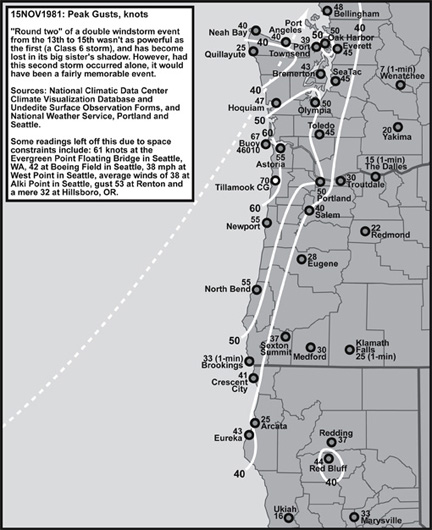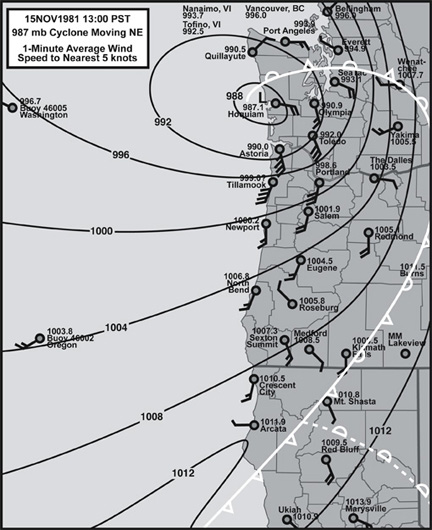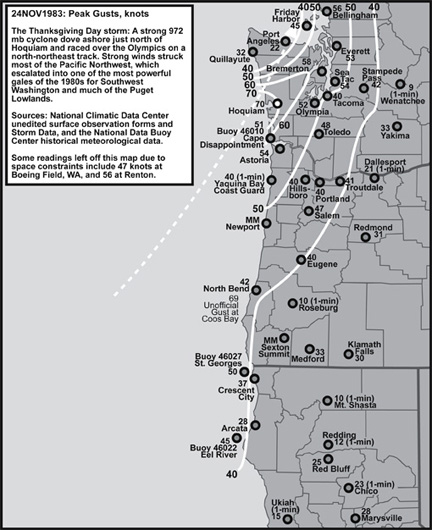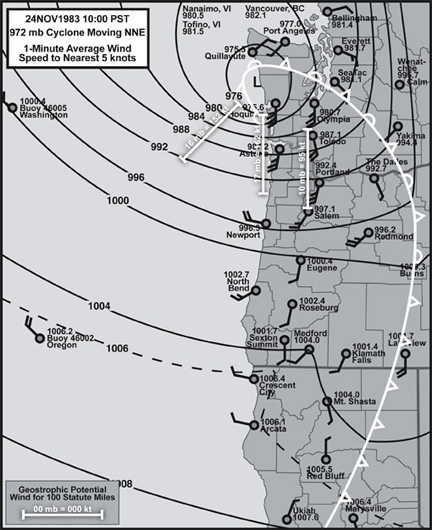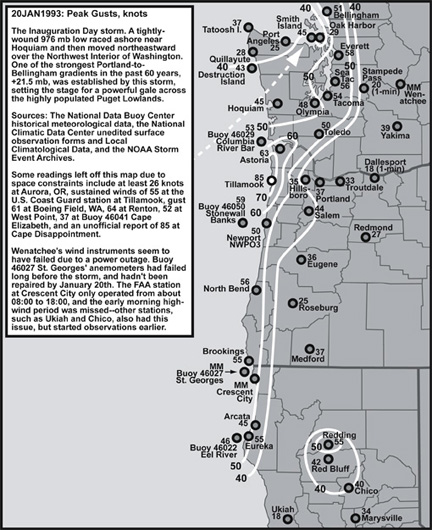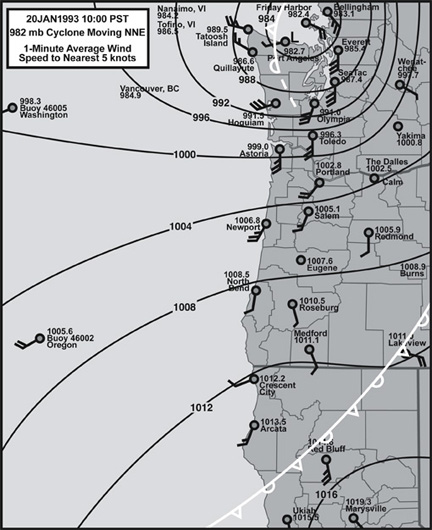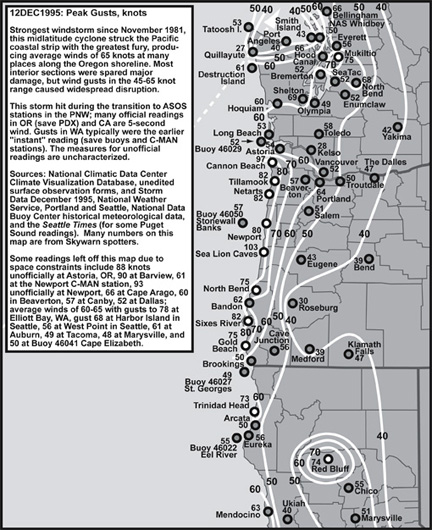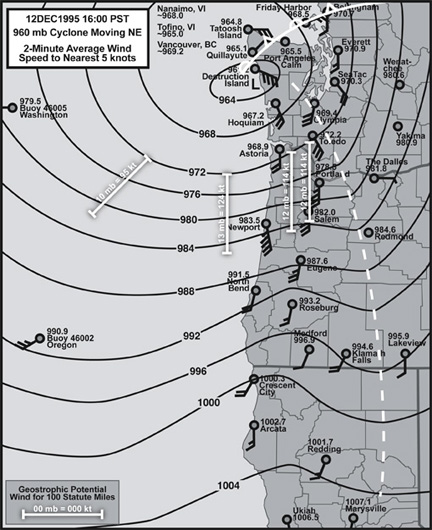A typical track for Class 4 windstorms is northeast, with the low center landing between Hoquiam and Tatoosh Island, WA. This brings a Class 4 cyclone's core very close to and also north of Seattle, which can put the entire Puget Lowlands and Northwest Interior under a storm’s most extreme south side. For the Washington Interior, the sharpest pressure gradients have occurred during these storms, along with some fairly strong pressure couplets. These events have been second only to the Columbus Day storm in their effect across much of the Interior region.
Very steep gradients suggest that wind velocities could be the strongest with these storms, but it appears that the northeast track doesn’t support high winds like a more northerly track would. This is primarily due to upper-air winds that aren’t parallel to the interior-lowlands orientation, being more SW to NE instead of the S to N that pushes a cyclone nearly due north like in a typical Class 6 situation. One exception appears to be the Chehalis Gap in Southwest Washington. Sometimes intense SW winds are supported in the southern Puget Lowlands due to this large terrain gap, especially in the vicinity of Shelton and Olympia. On a northeast track, the storm's overall momentum isn't parallel to the general interior-valley orientation, as it would be in a classic event like the Columbus Day storm. This limits support for south winds on the right side of the storm, again due to terrain factors. With the gradient-orientation, terrain-orientation and upper-airflow variables a bit out of phase, wind speeds appear to be tamed to a degree, but not enough to prevent some of the most extreme gales in the region.
Even despite a track that brings the storm center in fairly close proximity, these storms tend to spare the Willamette Valley a major gale, though sometimes damaging gusts reach as far south as Portland and Salem. It appears that, in most events of this type, maximum winds reach about 35 mph gusting 50 in the Willamette Valley, compared to 45 mph gusting 65 in the Puget Lowlands. In a rough relationship, the deeper the low, the greater that chance that damaging winds will turn up in the Willamette Valley.
Of the four storm events shown below, the first three are of remarkable similarity in track and perhaps even developmental stage. The three scenarios provide a wonderful opportunity for comparison, especially in terms of differences in maximum wind speed distribution that may be associated with variation in cyclone depth at landfall (972 mb for 24 Nov 1983, 980 mb for 20 Jan 1993 and 987 mb for 15 Nov 1981) and also variation in other structural features (such as location and spread of strong gradients relative to the low center). Every cyclone is unique, a fact that is clearly demonstrated by these three "sister" storms.
